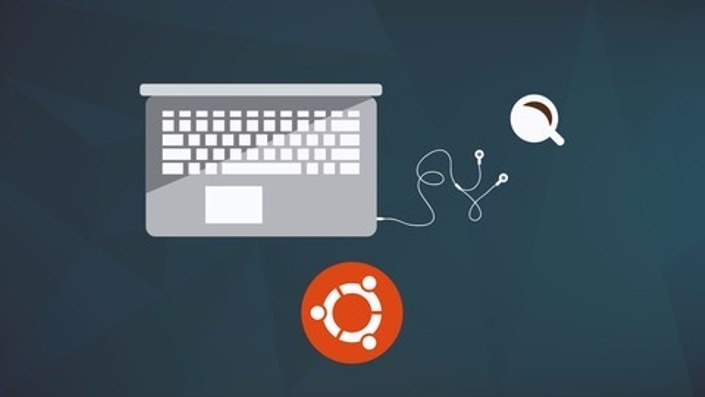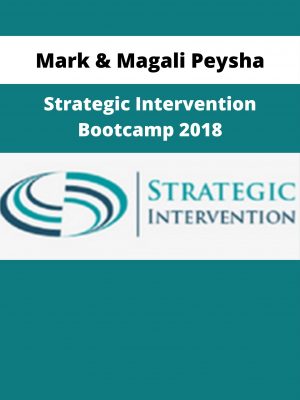Jerry Banfield with EDUfyre – Ubuntu Linux – Go from Beginner to Power User!
$199 Original price was: $199.$40Current price is: $40.
Shopping Instructions:
- DISCOUNT 15% : SHOP15
- Product Delivery: Within 1 – 12 hours after purchase.
This is one of the few Linux courses fully subtitled in English, and we will happily assist you every step of the way as you familiarize yourself with Ubuntu
Jerry Banfield with EDUfyre – Ubuntu Linux – Go from Beginner to Power User!
If you want to learn Ubuntu Linux, you can use this course to give you motivation and 7+ hours of practical tips for using Ubuntu Linux! You can take this course and enjoy it with no experience on Linux or previous experience on another operating system that you want to expand with knowing Ubuntu. With 10 years of experience as a Linux administrator & developer, you can count on Nick to explain what is worth knowing in a simple and practical way that is easy to understand. When you watch Nick show you commands, you will feel comfortable trying them and confident you can become a power user in Ubuntu Linux!
This is one of the few Linux courses fully subtitled in English, and we will happily assist you every step of the way as you familiarize yourself with Ubuntu, Linux administration, networking, and development!
Thank you for reading this and we hope to see you introducing yourself in the course soon!
Your Instructor(s)
Jerry Banfield with EDUfyre
Jerry Banfield with EDUfyre
In 2005 while I was in college at the University of South Carolina, I tried to working online. I signed up for an MLM program and a survey website. A month later, I had refunds from both and figured working online was not possible because everything was a scam. The truth was I was afraid to fail again.
In 2011, I moved in with my wife and launched an online business focusing on video game addiction in an attempt to avoid dealing with any of my other problems. In a few months, I changed my business to selling shirts because I realized there was no money in video game addiction. A year after ing my business, I dropped out of my criminology PHD program at the University of South Florida to run my business full time which by then had changed to helping clients with Facebook and Google ads based on my experience failing to do them successfully for myself.
In 2013, I ing sharing everything I knew for free on YouTube because I hoped it would help me get more clients. By April 2014, I was nearly bankrupt after failing at 15+ different business models. I was also nearly dead from trying to drink the pain away and fortunately the fear of death motivated me to get into recovery. Being in recovery motivated me to focus more on being of true service to others and less on what I would get out of it. I ed making courses online with Udemy which soon turned into my first real business. I partnered with as many talented instructors as I could and learned from top instructors how to get my courses the most sales.
In 2015, I tried making some inspirational videos sharing what I learned in recovery and got an amazing response on YouTube. To make the background on my videos more interesting, I ed making the inspirational videos while playing video games. To make a more helpful website, I hired a freelancer to convert the videos into blog posts including this about page originally.
Get immediately download Jerry Banfield with EDUfyre – Ubuntu Linux – Go from Beginner to Power User!
Course Curriculum
Getting ed with Ubuntu Linux
Introduction to Ubuntu Linux and getting ed as a power user! (7:44)
What are Linux distributions? (7:11)
Installing Ubuntu in a Virtual Machine
Installing VirtualBox and setting up your virtual machine. (7:50)
Installing Ubuntu Linux on your virtual machine (pt.1) (6:38)
Installing Ubuntu Linux on your virtual machine (pt.2) (6:00)
Disabling the ISO & first boot up. (2:14)
Optimizing Ubuntu for a Better User Experience & Customizing your Desktop
Installing Guest Additions for a better user experience. (7:33)
Customizing our Ubuntu desktop. (8:27)
Installing the Unity Tweak Tool for Ubuntu. (12:06)
Installing Ubuntu Linux Alongside your Primary Operating System
Installing Ubuntu along side Windows on your actual hard drive (pt.1) (6:05)
Installing Ubuntu along side Windows on your actual hard drive (pt.2) (10:16)
Getting ed with the Linux Command Line
Getting ed with the Linux command line (pt.1) (5:32)
Getting ed with the Linux command line (pt.2) (7:35)
Administrative privileges in the Linux terminal. (5:57)
Using the package manager to install new applications. (4:02)
Searching through the repository to find new applications to download. (2:05)
What if we want to install a package that is not in the repository? No problem! (4:46)
Keeping programs updated in Ubuntu Linux. (4:39)
File permissions and ownership explained (pt.1) (4:26)
File permissions and ownership explained (pt.2) (8:10)
How to create a new file in the terminal and recap. (4:58)
Creating new directories and moving files. (4:34)
Copying, renaming, and removing files. (4:44)
Moving on to more Advanced Commands in the Terminal
Getting ed with the FIND command and it’s practical uses (pt.1) (3:30)
Getting ed with the FIND command and it’s practical uses (pt.2) (4:32)
Getting ed with the FIND command and it’s practical uses (pt.3) (3:24)
Introduction to the GREP command. (2:59)
Using GREP in conjunction with the FIND command. (3:15)
How to redirect the output of a command. (3:16)
Using the TOP command to view applications on your Linux machine in real-time. (1:18)
How to view the entire list of processes and closing applications. (5:35)
What is a service? (2:07)
Configuring services using the command line. (4:35)
Using CRONTABS to schedule tasks. (2:58)
What are the practical applications of CRONTABS? (2:37)
Ubuntu Linux Developer Tools: Get ed as a Freelancer Today!
Choosing an integrated development environment (IDE). (3:33)
Eclipse installation and set-up. (3:57)
PyCharm Installation and set-up. (4:34)
PyCharm installation problem resolved. (1:49)
Introduction to GitHub, installation, and how to set-up a repository. (4:15)
How to pull/push information from our repository. (6:07)
How to remove/ignore directories in our repository. (5:12)
How to resolve merge conflicts from the command line. (7:17)
How to set-up and manage branches. (7:12)
Correction from the previous lecture. (0:42)
Getting ed with Meteor. Installation and how to add packages. (5:54)
Meteor tutorial pt. 1: Setting up your first project. (5:34)
Meteor tutorial pt. 2: Setting up our router and React components. (5:54)
Meteor tutorial pt. 3: Watch as our project begins to take shape! (6:30)
Meteor tutorial pt. 4: Working on the actual programming. (13:14)
Meteor tutorial pt. 5: Rendering our posts. (8:51)
Meteor tutorial pt. 6: Putting the finishing touches on our project. (6:28)
Apache 2, PHP 5, and MySQL installation. (3:29)
Getting ed with our server configuration. (5:38)
Hosting our own Web Server & Deploying our Meteor App
What is the hosts file on a Linux system? (3:25)
Deploying our Meteor app to an Apache 2 server. (5:23)
Setting up our MongoDB NoSQL database. (5:17)
Creating our virtual host. (3:35)
Using a shell script to set our environment variables. (7:49)
Installing & configuring phpMyAdmin. (3:14)
Let’s take a tour around the phpMyAdmin panel. (4:48)
Creating a basic virtual host. (8:10)
Setting up a WordPress installation on top of our Apache 2 environment. (7:24)
Before we begin using WordPress, we need to set-up our database. (6:22)
Python installation & command line interface. (4:29)
What are the practical applications of Python? (6:17)
Managing Users, Permissions, and Groups
Adding/removing users through the system settings graphical user interface (GUI) (3:34)
Adding new users through terminal. (4:03)
How to delete users through terminal. (0:57)
How to change an existing users password. (0:45)
Adding users to a group and why this is valuable. (3:55)
Linux Network Administration Tools
Introduction to networking. (1:38)
How does the internet work? (5:11)
What is a local network? (7:26)
Practical networking commands (pt.1) (5:32)
Practical networking commands (pt.2) (4:59)
Using the netstat command to tack detailed network statistics. (4:59)
An in-depth look at the Linux hosts file (pt.1) (4:31)
An in-depth look at the Linux hosts file (pt.2) (4:48)
Using traceroute to track the servers a request passes through. (3:57)
Using Network Mapper to track the activity on your network (pt.1) (7:36)
Using Network Mapper to track the activity on your network (pt.2) (6:56)
Setting up a SSH Host on our local and Course Wrap-up
Using ssh to access the command line of a remote host. (2:37)
Let’s use sftp to transfer files to and from machines. (3:36)
Setting up an ssh host on our local machine. (5:27)
Using the man command to learn info about the programs on your Linux machine. (3:40)
Frequently Asked Questions
When does the course and finish?
The course s now and never ends! It is a completely self-paced online course – you decide when you and when you finish.
How long do I have access to the course?
How does lifetime access sound? After enrolling, you have unlimited access to this course for as long as you like – across any and all devices you own.
What if I am unhappy with the course?
We would never want you to be unhappy! If you are unsatisfied with your purchase, contact us in the first 30 days and we will give you a full refund.
Read more: https://archive.is/libRd
Be the first to review “Jerry Banfield with EDUfyre – Ubuntu Linux – Go from Beginner to Power User!” Cancel reply
Related products
Business & Sales
Business & Sales
Business & Sales
Business & Sales
Business & Sales
Business & Sales
Business & Sales
Korbett Miller – Manage your Business Remotely with Online Tools
Internet Marketing













Reviews
There are no reviews yet.